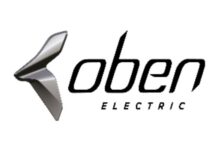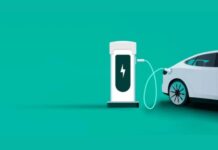Electric mobility in the country has recently received a big boost from the government. The proposal for the implementation of ‘Faster Adoption and Manufacturing of Electric Vehicles in India Phase II (FAME India Phase II)’ has been approved by the Union Cabinet, chaired by Prime Minister Narendra Modi, for the development of electric mobility in the country. The scheme of Rs 10,000 crore for three years was implemented on April 1, 2019. This scheme is the expanded version of the previous FAME India 1, which was launched on April 1st, 2015, with a total amount of Rs 895 crore. By way of offering incentives upfront on the purchase of electric vehicles. FAME India Phase II aims to encourage faster adoption of electric and hybrid vehicles by establishing the necessary charging infrastructure for EVs, which is very critical if e-mobility wants to take root in the country.
At present, Phase II of the FAME India Scheme is being implemented for a period of 5 years which was started on April 01, 2019, with a total budget of Rs. 10,000 crores. This phase has focussed on supporting the electrification of public & shared transportation and it also aims to support, through subsidies, 7090 e-Buses/5 lakh e-3 Wheelers/55000 e-4 Wheeler Passenger Cars and 10 lakh e-2 Wheelers. 38 original equipment manufacturers of e-2W, e-3W & e- 4W (OEMs) were registered under phase II of the FAME-India Scheme till 9th August 2021.
Under the scheme of FAME-II, the demand incentive for e-2W has been increased to Rs. 15,000/KWh from Rs. 10,000/KWh with an increase in cap from 20% to almost 40% of the cost of the vehicle to increase the adoption of e-2W. Further, phase II of the FAME-India Scheme has been extended for a period of two years after 31st March 2022.
A year ago following initiatives had also been taken up by the Government of India for the promotion of electric vehicles in the country – The Government approved on May 12, 2021, a Production Linked Incentive (PLI) scheme for the manufacturing of Advanced Chemistry Cell (ACC) in the country to bring down prices of battery in the country. The drop in the price of the battery will result in cost reduction for electric vehicles. GST on electric vehicles was reduced from 12% to 5%; GST on chargers/ charging stations for electric vehicles has been reduced from 18% to 5%. Ministry of Road Transport & Highways (MoRTH) recently announced that battery-operated vehicles will be given green license plates and be spared from permit requirements. A notification was issued by MoRTH advising states to waive road tax on EVs, which in turn will help reduce the initial cost of EVs.
The Sum of Rs 10,000 crore has been made for three years till 2022 for the FAME 2 scheme. Rs 8,596 crore for incentives has been sanctioned by the center, of which ₹1,000 crores has been marked for setting up charging stations for electric vehicles in India. To be used for commercial purposes, the government will offer incentives for electric buses, three-wheelers, and four-wheelers. Plug-in hybrid vehicles and electric motors will also be included in the scheme and fiscal support offered will depend on the size of the battery.
The center will invest more money in setting up charging stations, with the participation of active public sector units and private players. It has also been proposed to provide one fast-charging station and one slow-charging unit for every 10 electric buses. FAME 2 will also encourage the interlinking of renewable energy.
The center may think to incentivize the purchase of 7,090 electric buses with a sum of ₹3,545 crores, 35,000 four-wheelers with ₹525 crores, 20,000 hybrids with ₹26 crores, and 500,000 three-wheelers with ₹2,500 crores.
Manufacturers, who invest in developing electric vehicles and their components, including lithium-ion batteries and electric motors will be offered incentives by FAME 2. The center has asked states to frame their EV policy and provide non-fiscal and additional financial incentives to manufacturers and buyers. Plug-in hybrids priced under ₹15 lakh, buses priced up to ₹2 crores, three-wheelers under ₹5 lakh, and two-wheelers under ₹1.5 lakh will be eligible for incentives.
On the electric three-wheeler front, the aggregation will be the key method for bringing the upfront cost of electric three-wheelers to an affordable level and at par with ICE three-wheelers. For this, the ministry mentioned that the state-owned (EESL) Energy Efficiency Services will come out with aggregate demand for 300,000 electric three-wheelers for multiple user segments. The details will be worked out by Energy Efficiency Services for implementation. Lastly, the Heavy Industry Ministry had detailed for electric buses that cities with a 4-million-plus population – Mumbai, Delhi, Hyderabad, Bangalore, Chennai, Ahmedabad, Kolkata, Pune, and Surat – will be targeted. Energy Efficiency Services will again go for aggregation of demand in these cities for the remaining e-buses on an OPEX basis. The details shall be worked out soon by Energy Efficiency Services for implementation
The Indian automotive industry has now become the fifth largest in the world and is slated to become the third largest in the next 7-8 years. To address this, federal policymakers are developing a mobility option that is “Connected, Electric, and Shared” and have projected an aim to achieve this target of 100 percent electrification by 2030. India stands to benefit on many fronts, by making the shift towards electric vehicles (EVs). Regardless of the country’s ambitious targets for the coming future, India’s Electric Vehicle space is at a nascent stage. However, India offers the world’s largest untapped market, especially in the two-wheeler segment. Foreign direct investment is 100 percent allowed in this sector under the automatic route.
About the author:

Dr. Irfan Khan is the Founder & CEO of eBikeGo (https://ebikego.com ) India’s largest smart electric two-wheeler mobility platform.

















